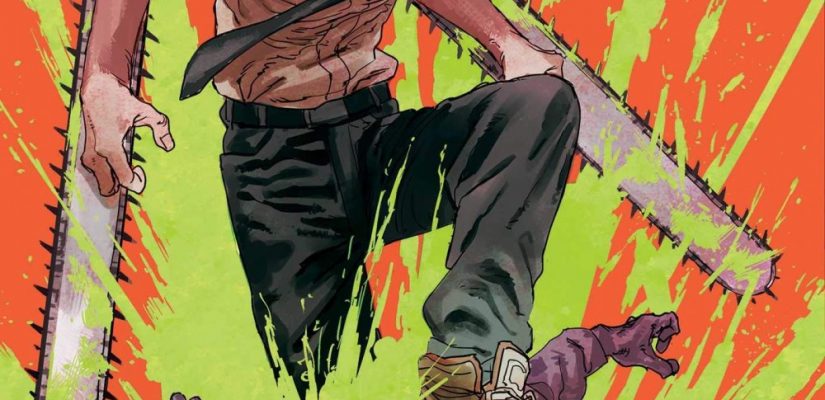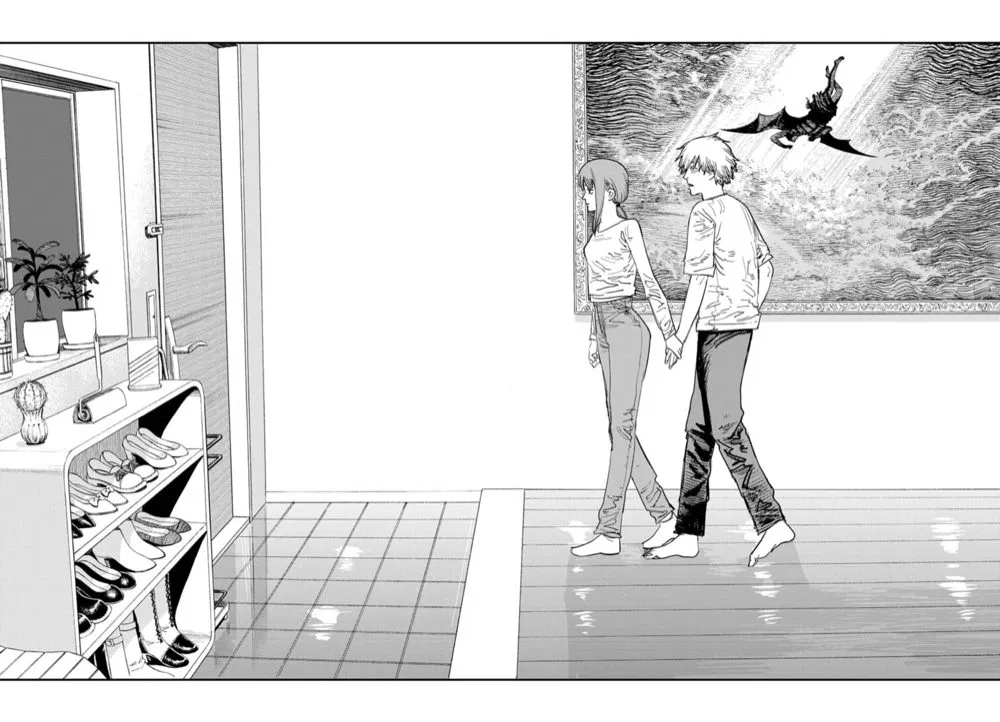
WARNING: HEAVY CHAINSAW MAN SPOILERS
The manga Chainsaw Man by Fujimoto Tatsuki recently concluded “Part 1” of its story, and having heard fans both real and virtual praise the series up and down, I decided to marathon through it. Count me as a convert, as I think it’s one of the best things to come out of Shounen Jump in recent years. The narrative turns are compelling and the characters are charming in their foolishness.
However, there’s a large twist in the series that brings to mind a trope that sparked discussion around superhero comics back in the early 2000s: Women in Refrigerators. Originally coined by Gail Simone (who was still a critic and not a writer of comics at the time), it refers to when characters close to the hero—often a lover or companion—is killed in service of making the villain appear more nefarious. While not automatically bad, its overuse reduces female characters to discardable pawns. Manga, especially male-oriented titles, can have their own instances of fridged women, but Chainsaw Man seems to lean fully into the concept in ways I’ve never seen before.
The protagonist of Chainsaw Man is Denji, a lonely guy who doesn’t think life is worth living, but is given a second chance when a demon he befriends known as the Chainsaw Devil offers him a chance at the normal existence he’s always wanted. Denji’s discovered by a beautiful female government agent named Makima, who recruits Denji to fight demons as Chainsaw Man. In addition to being a target of Denji’s immature affections, Makima provides him with companions, including a female fiend (half-human, half-devil) with blood-based abilities named Power. Over time, the bond between the two of them grows, and they make a great if chaotic team—like two violent Monkey D. Luffys with bad attitudes but good hearts. Eventually, though, Makima reveals that her motives for recruiting Denji were anything but pure. In an act of cruelty designed to cow Denji and leave him in despair, Makima murders Power in front of Denji with little warning, Power even having been carrying a birthday cake for Denji in anticipation of a celebration. Death of named characters in Chainsaw Man is not uncommon, but Power’s death hits especially hard.

It is undoubtedly a moment where a female character is killed so as to create a psychological impact on the male hero, but what Chainsaw Man also reveals this to have been Makima’s plan from day one. As Makima explains, Denji inadvertently entered a contract with the Chainsaw Devil where Denji is meant to receive a normal life in exchange for their fusing together, and the only way to deny him that basic happiness is to manipulate his life. As such, Makima purposely gave Denji friendships so that she could snatch them away and keep him under her thumb. Unlike many superhero instances of Women in Refrigerators, this is not tacked on as a way to raise the stakes, but is core to the overall story and the truth of Chainsaw Man’s world. The trope isn’t just kind of there thoughtlessly—it’s front and center, and fully exposed.
To be accurate, Power isn’t completely gone, as her blood-control powers allow her to exist within Denji, and his motivation transforms into finding a way to bring her back. At the climax of the story, Denji also delivers a fatal blow to Makima using a chainsaw made from Power’s blood. Narratively, it’s explained that Power’s blood can prevent Makima from regenerating—Makima’s actually powered by a devil just like Denji, and has come back from death over 20 times—but there’s also a great symbolism in having Power get her payback in essence. Power is neither fully alive or fully dead, and while reducing her physical existence does potentially play into the idea that her role in the story is subordinate to Denji’s, the manga does such a strong job of portraying their relationship as that of equals (albeit two incredibly idiotic equals). The result is that Power looms large over Chainsaw Man as it enters Part 2, and is still one of the most important characters in the manga. She’s also consistently the most popular character in the series among English and Japanese fans.
Part 1 of the manga actually ends with a woman in a refrigerator. After defeating Makima and keeping her from regenerating, he tries to figure out a way to keep her from coming back from the dead. His solution: chop her up, store her in the fridge, and slowly cook and eat her entire body as a way to deny Makima her wish, which is to be eaten by the devil Chainsaw Man due to certain unique properties that Chainsaw Man possesses. Denji actively engages in cannibalism as himself and not his transformed state to prevent this from happening. He also chooses this gruesome route because he sees it not as an act of malice but a perverse way of wanting to be “together.” I don’t believe that this is the author of Chainsaw Man intentionally calling out the trope, but it’s hard to ignore, and it still winds up with a woman being literally fridged in service of a greater goal.
Chainsaw Man is a manga that can come across as brainlessly violent and gross, but it’s proven itself to be the product of extreme thoughtfulness. Even though its characters are often brash and simple, the story itself is not, and the handling of its own Women in Refrigerators does not feel like it detracts from the series other than making readers angry that Makima dare kill the best character. Power’s influence on the series continues to loom large, and it helps avoid the feeling that being fridged trivializes her character, and keeps Chainsaw Man as a whole from being subsumed by the wastefulness of the trope. In an Obi-Wan Kenobi sort of way, striking Power down makes her more powerful than we can possibly imagine.